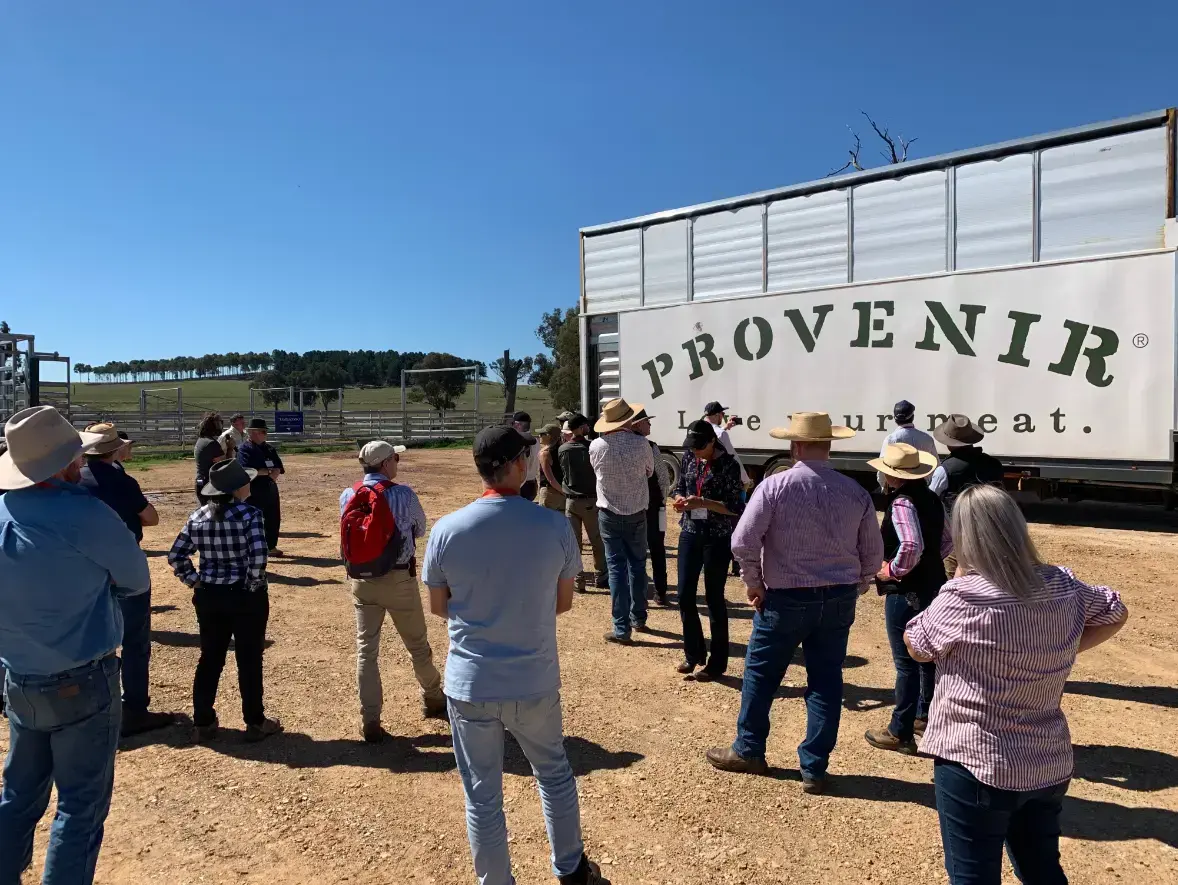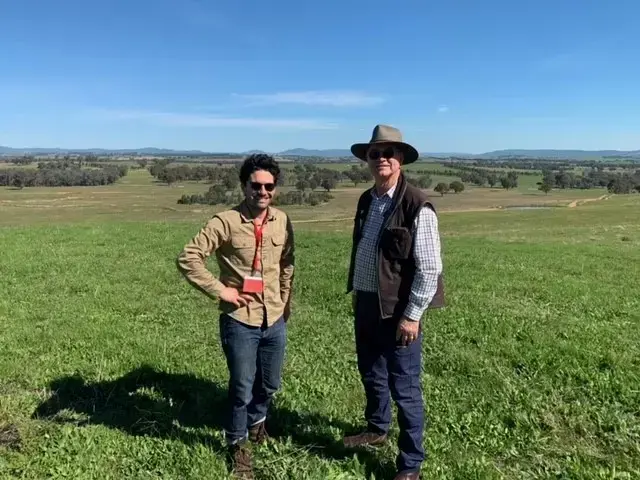Last week’s Land to Market Farming Matters conference in Albury felt like a festival of regenerative culture. Unlike many events, its clear that participants in this conference were overwhelmingly delighted to be there, and enthusiastic about the topics of discussion. It really did feel like a tightly knit community of likeminded people.
The event kicked off with an intimate session exploring the value of local, peer-to-peer farmer support groups, and the factors that can make them succeed or fail. The event included presentations and panel discussions involving support group participants and holistic management trainers. The overwhelming message: these groups, above all, have made participants’ lives and enterprises better by providing deep and supportive friendships built on trust, openness and vulnerability. Shifting the way a family farms, and adopting new regenerative practices, can be overwhelming, and these support groups provide a safe environment in which to raise and explore questions and solutions, and accountability for doing what you say you’ll do. While every group was different, some of the key success factors for groups included: finding the right mix of people who are a good fit, with a balance of similarity and diversity; finding a meeting schedule and format that works for everyone; fostering an environment of trust, openness and honesty; and ensuring members feel a strong sense of ownership of the group. Lyn Sykes summed it up perfectly: “If we want sustainable farms, we must have sustainable farming families”. The first day ended with a welcome function by Harris Farm Markets, who are showcasing regenerative farmers on the shelves of their fresh food stores.
The next day commenced with a stirring welcome to country from Yalmambirra Yalmambirra of the Wiradjuri Council of Elders, and proceeded to more typical conference sessions. There was a strong focus on soil carbon and unlocking the potential of carbon markets. We started with David Farley from Matrix Communications, who reminded us of the global challenges of food security, and the ‘rewards that are coming’ to farmers who can demonstrate that their operations are sustainable. Lyn Sykes talked about the social element of agricultural transitions, and reminded us of the importance of inclusivity – “If you tell me what I’m doing is not ok, I will feel that I’m not ok, and then I have two choices: attack your position or defend my own”. Lorraine Gordon from Southern Cross Uni talked about the definition of regenerative agriculture, a topic that came up many times during the conference, and suggested that the principles not the practices are the most important thing. And Terry McKosker did a wonderful job of illustrating the complex interconnections between soil, the environment, carbon and agricultural production, and the choice we have to make: “Ecosystems are not just a cycle, they’re a spiral. We have a choice in agriculture, we can either spiral our ecosystems up or we can spiral down”. Terry also talked about the potential for carbon payments, and the ‘magic equation’ of soil organic carbon (1 tonne of SOC = 3.67 tonnes of CO2 that can earn credits). We then heard from Maia Grazing, including some incredible results indicating an average 26% increase in pasture yield simply from paddock subdivision, with holistic grazing management offering the possibility of increasing this further. The results from Wilmot presented by Maia suggested an 86% increase in yield from a combination of paddock subdivision, increased grazing density and increased rest periods, and a soil organic carbon increase from 2.3% to 4%.

Photo of the field trip group with Bill and Joy Wearn, chatting about grass, rotational grazing and many other things over lunch.

The Provenir mobile abbatoir
The conference dinner that evening was sponsored by Provenir, Australia’s first mobile abbatoir, enabling animals to be processed on farm, avoiding the stresses of road transport and offering the hope of greatly improved information about where our meat is coming from and resulting marketing opportunities. Author and journalist Gabrielle Chan moderated a panel discussion over dinner, with Charlie Arnott, George King, Martin Royds and Rachel Ward. One interesting reflection from Gabrielle was that while there’s a lot of enthusiasm in this community, there’s also a lot of ’shoutiness’. The panel discussed how to ensure the regenerative agriculture movement can be more inclusive in its language in order to bring the practices, principles and approaches more into the mainstream. We also heard from an astounding number of podcasters who were in the audience. Here’s a list if you’re looking for something new:
- The Regen Report by Agriprove
- Over the Fence, by Farmers for Climate Action
- Big Shift for Small Farms, The Business of Biodiversity, The Farmers Podcast, and The Pastoral Poddy by Grow Love Project
- The Biological Farming Roundtable by Nakala Maddock
- The Regenerative Journey by Charlie Arnott
- RegenNarration by Anthony James
The conference closed with a series of field days. I attended the wonderful Bill and Joy Wearn’s Yammacooma property. We were taken on a tour to see their landscape works, designed to slow the movement of water through the landscape and reduce erosion, their pine and eucalypt plantations, and their biodiversity plantings. But the most striking aspect of the tour was listening to the careful, patient, observant approach that Bill and Joy take to the management of their property and their business. We stopped off briefly at the top of a hill with a glorious view of the property, and jumped out for a photo at the spot where our founder Major General Michael Jeffery had stood many years before.

Eli and Garry Nairn from Mulloon Institute at the spot where Major General Jeffery stood at Yammacooma
The day ended with a visit to the Provenir mobile abbatoir, and an amazing talk about the logistical and regulatory hurdles the company had to overcome in order to get Australia’s first mobile abbatoir on the roads. Well done to the team at Provenir for blazing the way!




